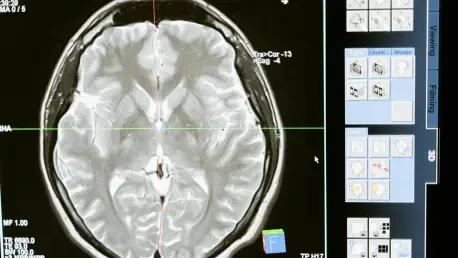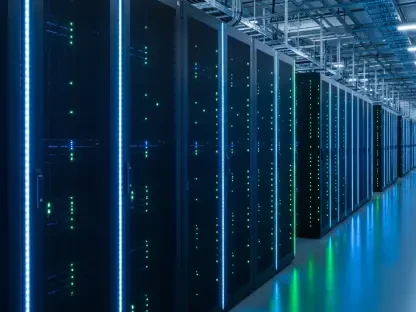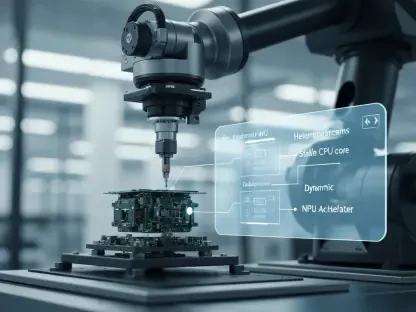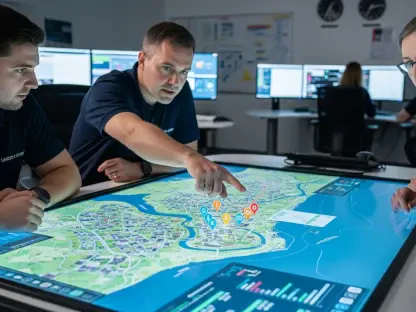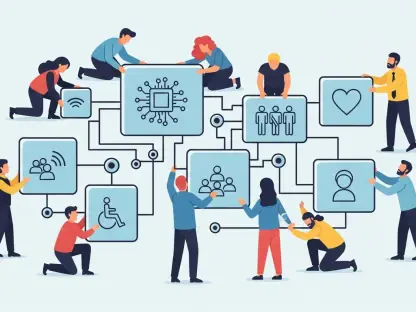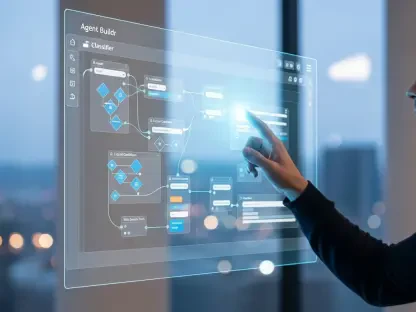Imagine a world where machines can see and interpret their surroundings with the same nuanced understanding as the human eye, adapting effortlessly to diverse tasks across industries like agriculture, healthcare, and robotics. This vision is becoming a reality through groundbreaking advancements in computer vision, driven by artificial intelligence (AI) models that draw inspiration from the human brain. These innovations are not just enhancing traditional applications like facial recognition but are pushing boundaries into uncharted territories, enabling lightweight, efficient systems that can operate in resource-constrained environments. The focus is on creating adaptable technologies that minimize computational demands while maximizing accuracy and resilience. This shift promises to transform how industries tackle real-world challenges, from automating intricate cooking processes to monitoring crop health with precision. As research accelerates, the potential for these brain-inspired models to redefine technological capabilities is becoming increasingly evident.
Breaking New Ground with Brain-Inspired Techniques
The quest for more efficient computer vision systems has led researchers to explore the intricacies of the human brain, particularly the visual cortex, for inspiration. A notable advancement in this realm is the development of Lp-Convolution, a technique pioneered by experts from renowned global institutes. Unlike traditional Convolutional Neural Networks (CNNs) that rely on fixed, square-shaped filters to process images, Lp-Convolution introduces dynamic adaptability. Filters can stretch horizontally or vertically depending on the specific task, mimicking the brain’s selective processing. This flexibility results in heightened accuracy, even when dealing with corrupted or incomplete data—a persistent hurdle in image recognition. By reducing the rigidity of conventional models, this approach marks a significant step toward creating AI systems that can better emulate human-like vision, offering robustness that is critical for real-world applications where data quality is often unpredictable.
Beyond adaptability, the brain-inspired approach addresses a core challenge in computer vision: resource efficiency. Traditional CNNs often demand substantial computational power, making them impractical for edge-computing devices or robotics with limited hardware capabilities. Lp-Convolution counters this by optimizing how visual features are extracted, ensuring that high performance does not come at the expense of excessive energy or processing needs. This efficiency is vital for deploying AI in scenarios where power and space are at a premium, such as autonomous drones or wearable health monitors. Moreover, the resilience to data imperfections means that these models can maintain reliability in less-than-ideal conditions, broadening their applicability across diverse fields. As this technology evolves, it underscores a pivotal trend in AI research—striking a balance between sophisticated functionality and practical deployment, ensuring that cutting-edge vision systems are accessible beyond high-end laboratory settings.
Transforming Industries through Practical Applications
Computer vision is no longer confined to academic labs; its practical applications are reshaping industries with innovative solutions tailored to everyday challenges. In the culinary robotics sector, for instance, a US-based startup has developed a countertop machine that leverages advanced vision technology to analyze details like vegetable cuts and meat doneness. The system autonomously adjusts cooking parameters, showcasing how AI can democratize complex tasks for niche markets. Similarly, in agriculture, companies are harnessing this technology for remote sensing and reforestation efforts. A French startup uses vision systems to assess vegetation health, while an Israeli firm employs AI in greenhouses to detect pests and diseases early, minimizing crop losses. These examples highlight a growing trend: computer vision is becoming indispensable for optimizing processes, reducing labor, and addressing pressing needs across varied sectors with precision.
The impact of these applications extends beyond immediate solutions, signaling a broader shift toward accessibility and scalability in technology adoption. As vision systems become more lightweight and less resource-intensive, small-scale businesses and resource-limited regions can integrate them without the burden of high costs or complex infrastructure. This democratization is evident in how startups are tailoring solutions for specific challenges, whether it’s automating kitchen tasks or enhancing agricultural productivity. The ability to deploy such systems in real-world settings also fosters innovation, as feedback from diverse environments drives further refinements. Importantly, these advancements reflect a consensus in the industry that computer vision must evolve to meet practical demands, ensuring that its benefits are not limited to large corporations but extend to grassroots levels, empowering a wide range of users to solve unique problems with tailored technological tools.
Overcoming Barriers with Innovative Training Methods
One of the most significant hurdles in scaling computer vision applications has been the extensive resources required to train AI models, often necessitating vast amounts of human-annotated data. Addressing this, researchers at a prominent university have introduced a machine learning system based on an ESGAN (Efficiently Supervised Generative and Adversarial Network) architecture. This system trains itself to distinguish between specific features—such as flowering versus non-flowering grasses in aerial imagery—with minimal human input. By utilizing competing models within the framework to refine each other’s performance, it drastically reduces dependency on labor-intensive data preparation. This breakthrough not only streamlines the adaptation of AI for niche tasks in agriculture but also holds promise for other sectors where annotated data is scarce or costly to produce.
The implications of self-sufficient training methods like ESGAN are profound, particularly for accelerating the adoption of computer vision in resource-constrained settings. By minimizing the need for extensive human oversight, these systems lower the entry barrier for organizations lacking the budget or expertise to curate large datasets. This is especially critical in fields like environmental monitoring or small-scale farming, where tailored AI solutions can make a substantial difference but are often out of reach due to training complexities. Furthermore, the approach fosters scalability, as models can be rapidly fine-tuned for new tasks without starting from scratch. As research continues to refine these autonomous training frameworks, the potential to deploy sophisticated vision technologies in diverse, under-resourced environments grows, paving the way for broader societal impact and innovation across multiple domains.
Paving the Way for a Versatile Future
Reflecting on the strides made in computer vision, it’s clear that brain-inspired models and innovative training methods mark a turning point in balancing performance with practicality. The development of techniques like Lp-Convolution demonstrates how mimicking human brain functions can enhance accuracy and resilience, while self-training systems like ESGAN tackle the resource-heavy nature of AI model preparation. Real-world applications, from culinary robotics to agricultural monitoring, showcase the technology’s transformative power across industries. Looking ahead, the focus should remain on refining these advancements to ensure even greater efficiency, making vision systems viable for the most constrained environments. Exploring cross-disciplinary collaborations could further unlock novel applications, while continued investment in accessible, scalable solutions will be key to addressing global challenges. The journey of computer vision has laid a robust foundation; the next steps involve building on this momentum to create tools that are as versatile as they are powerful.
